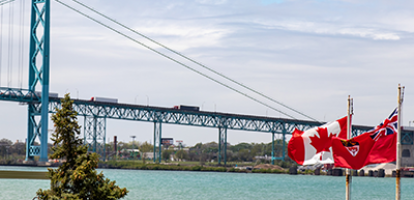From: Marcel Boyer
To: Federal and Provincial Ministers of Finance
Date: March 20, 2017
Re: Why the Cost of Government Borrowing Is Higher Than it Looks, and the Implications for Infrastructure
Canada’s infrastructure gap is somewhere between $150 billion and $1 trillion, and federal, provincial, and municipal governments have committed to spend hundreds of billions in various infrastructure programs over the next 10 to 20 years. Infrastructure is important: it shapes improvement in productivity, efficiency, innovation, social cohesion and well-being. But governments do not have an unlimited ability to borrow, and partnerships with private or institutional investors will become more common – see for instance the development of the Canada Infrastructure Bank, or the large-scale rapid transit system project in Montreal.
Protecting taxpayers’ interests, and ensuring that socially valuable projects are funded and developed, require a proper understanding of the real cost of capital for governments, which includes consideration of the project risks borne by future taxpayers.
It is often said that the private sector is in a good position to manage project costs and meet deadlines, but not generally to finance projects. The underlying argument runs as follows: because the interest rate on government borrowing is lower than on private sector borrowing, the cost of a project will necessarily be lower if it is funded by the government.
This is false. That is because the public cost of capital projects is higher than the financing cost for governments. The public cost of capital is what really matters in evaluating the social value of a project.
Governments can borrow at a low financing cost because of their power to raise additional taxes if projects fail. Public borrowing may appear risk-free to lenders, as government borrowing is not done on a specific project basis, but it is clearly not risk-free for taxpayers who cannot avoid supporting project risks. The risks of an investment project do not disappear because the project is financed by government borrowing; risks are simply transferred from lenders to taxpayers.
The implicit insurance granted by taxpayers to their government to require additional funds to meet commitments to lenders is a social cost of the project. By not taking such costs into account, current evaluations of public infrastructure projects are exposing taxpayers to unaccounted-for risks and bad investment decisions and allocations, thereby harming taxpayers.
Looking only at the borrowing cost of government when evaluating an infrastructure project underestimates the real cost of capital. The government cost of capital should include a premium for the investment risks borne by taxpaying citizens. When risks are properly taken into account, there is no significant difference between the capital cost of the public and private sectors.
When evaluating public investments, the expected benefits should always be discounted at a rate reflecting the real financial risks of the projects. Not doing so leads to taxpayers implicitly subsidizing projects, and to social welfare destruction since projects with greater expected future welfare benefits will not pass the cost-benefit test while projects with lower expected benefits will.
Marcel Boyer is a C.D. Howe Institute Research Fellow, and Professor Emeritus of Industrial Economics, Université de Montréal
To send a comment or leave feedback, email us at blog@cdhowe.org.





